Hollow Block Making Machine
When we talk about the hollow block making machine there are some different pictures and ideas of this machine in people’s heads so we need to specify what we exactly mean by it. A hollow block machine is a machine that produces hollow blocks using pressure and vibration to compress the concrete mortar into the molds and form the concrete blocks.

The hollow block machine has different molds in the shape of concrete blocks and when the mortar is poured inside these molds, the machine uses vibration and hydraulic force to press the mortar into the molds. In this way, concrete hollow blocks are shaped.
This machine is also called the interlocking brick machine and has two general categories as shown below.
• Mobile hollow block making machine:
The mobile machine is simpler and easier to use and also cheaper but most of the job like preparing concrete, transferring the mortar to the machine and operating the machine is done manually.
The capacity of this machine is also low compared with the stationary hollow block machine. This machine is suitable for small-scale projects with a low budget.
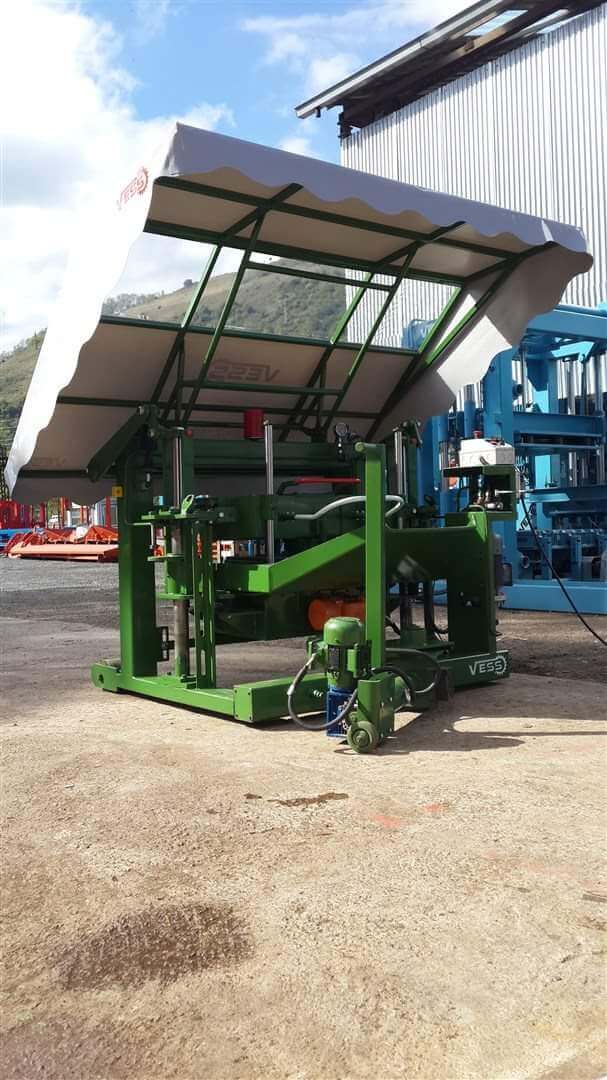
• Stationary hollow block making machine:
The stationary hollow block making machine is a bigger and stronger machine and it also has different models, different automation levels, and optional parts. This machine is the industrial version of mobile machines.
The smallest Stationary hollow block machine produces 4.000 pieces of concrete hollow blocks or 12.000 pieces of paving blocks on an eight-hour shift and the biggest Stationary machine produces 24.000 pieces of concrete hollow blocks or 56.000 pieces of paving blocks on an eight-hour shift.
If you need price details for these machines you can check Hollow Block Machine Prices.
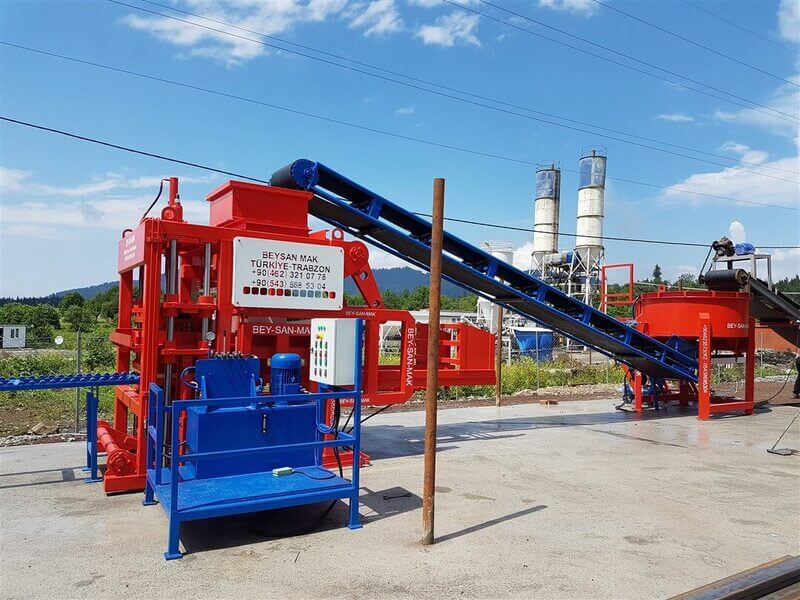
Note that double-hopper machines are also available and they are specially designed to produce double-layer paving blocks. For more details, you can read our article "paving block machine".
Concrete Block Types By Raw Materials
In modern construction practices, bricks are categorized according to the materials used to form them and the method of production. Under this classification, there are five common types:
- Burnt clay bricks
- Sand-lime bricks
- Concrete bricks
- Flyash clay bricks
- Fire bricks
This article is about concrete Hollow block making machines so first concrete brick is defined, then we will move to the machine.

Concrete Block Description
Concrete blocks also called cinder blocks or cement blocks, come in a wide variety of shapes and sizes. They are made from a mixture of Portland cement, sand, gravel, and water and produced in a machine.
There are two major categories for concrete blocks
When the mortar is wet and paste-like it is cast into the form of the block. Concrete blocks are usually placed in fences, and provide an excellent aesthetic presence. These bricks can be manufactured to provide different colors if color pigments are added during production. Note that Concrete bricks are not recommended to be used in below-ground applications. For underground construction, solid blocks are used mostly.
The difference between concrete block and cinder block is that cinder block comprises fly ash as aggregate but the concrete block does not. There are also other additives that can be used in the hollow block making machine.
You can read the article "What is Hollow Block?" to know every detail about hollow blocks
Normally the size of a standard hollow block is 20cm(width)x40cm(length)x20cm(height). This is a worldwide standard and the manufacturers produce their hollow blocks considering this standard. The size of the machine is also determined by these blocks.
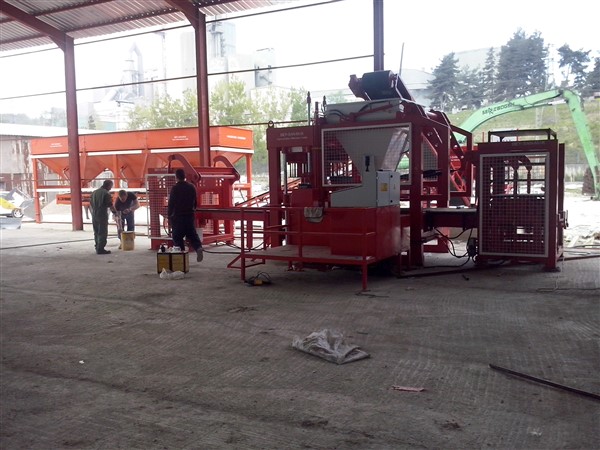
Hollow Block Making Machine Mortar Type
The basic mixture of the mortar is a 4-to-1 or 5-to-1 mixture. It means for every five units of sand you need to add one unit of cement and then you should add water until you achieve the texture you want for your machine.
To produce a mixture that can be used in a cement brick machine you generally want a thick, creamy mixture that will stick but also endure the blocks' weight.
When adding water, you need to be more careful because too much water will make it difficult for the sand particles to bond with cement in the concrete.
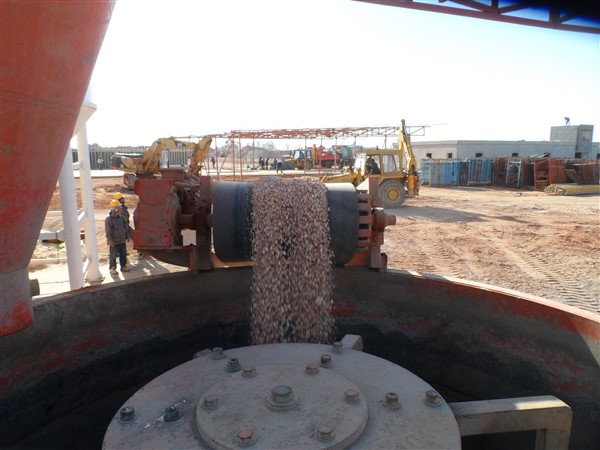
You should also be careful with the amount of cement you are using for your hollow block making machine. Too much cement will cause cracks on the hollow concrete clocks when they are dried.
You can sometimes go as low as three shovels of sand to one shovel of cement, anything beyond that does not provide you with a quality mortar that cures slowly and hardens the best.
Sand helps the hollow concrete blocks to withstand the weight of the wall. So make sure you use the right ratio in your mortar used in the hollow block making machine.
These days it is very important to make hollow blocks lighter in weight.

It can be achieved by mixing a lighter aggregate in the hollow block machine, such as perlite, vermiculite, or Styrofoam to reduce the overall weight.
Like always this method has advantages and disadvantages. It is not as strong as the common mixture but it has better insulation than the traditional concrete.
This concrete is often used for countertops and rooftop decks, where a lighter weight is more important than a higher strength. It is also used for walls where insulation is more important than strength, such as offices
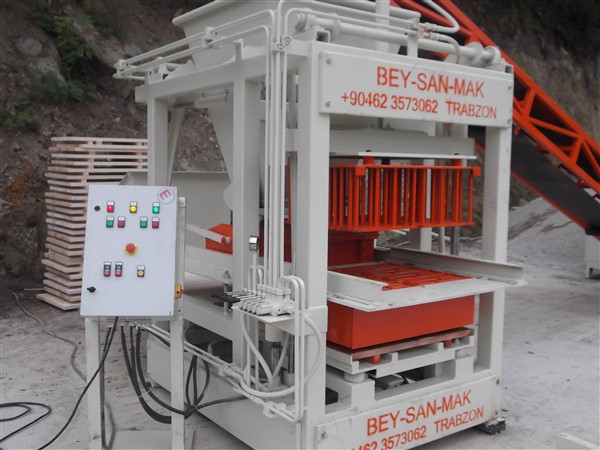
How A Hollow Block Making Machine Works
First, you need to prepare the mortar with the right ratio. Usually, one unit of cement is added to four units of additives and sand. Then you need to add the right amount of water till the mortar becomes like a paste. This action is done in the mixer.
Some Stationary hollow block making machines do the whole process of preparing the mortar automatically and some others do it semi-automatically. It depends on some facts like the budget or the capacity that the market requires.
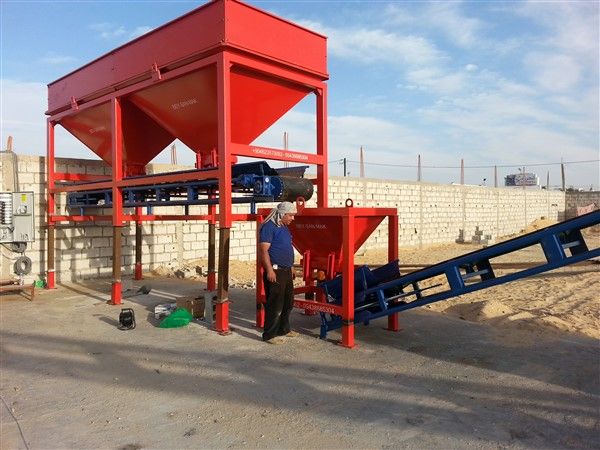
Then the mortar is delivered to the hopper of the machine by a conveyor belt. This action is also done automatically in double-hopper machines.
there are two options for the conveyor belt in the double-hopper machines:
1. Single conveyor belt with a changing position head to feed both hoppers
2. Two conveyor belts separately to feed both hoppers
The hollow block making machine will take care of the rest of the job. First, the mortar is poured into a machine called a mortar cart and the mortar cart starts to fill the mold by going back and forth. When the mold is filled the vibration starts to vibrate the mortar so the tiny space between sands can be filled and when the machine vibrates, the surface of the mortar shrinks. The mortar cart starts to fill the mold for the last time before the press starts its job.
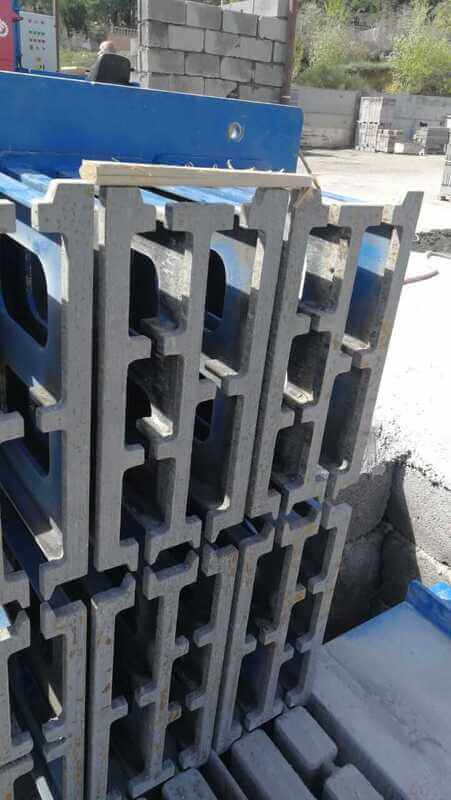
Pressing takes place on the surface of the pallets with the bottom and top molds. After pressing takes action both molds go up and the pallet is automatically delivered to the output of the hollow block machine.
Pallets are then delivered to the drying section or curing chamber. Delivering the pallets is optional it can be ordered as manual, semi-automatic, or automatic. It depends on your budget and production capacity.

Pallet size differs according to the size of the machine and as the machine gets bigger the pallet also needs to be bigger and thicker as well. The quality of the pallet is so important because of the maintenance. The higher quality pallets you use the longer you can use them and save money changing them.
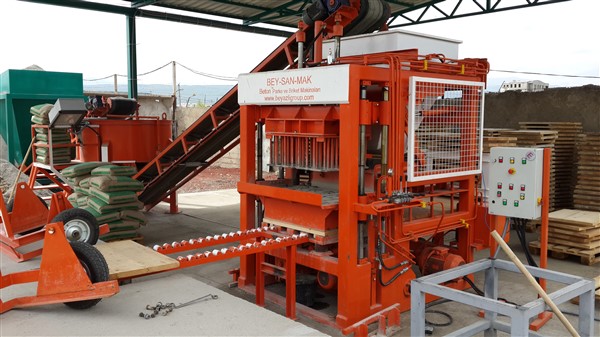
The same process also works with the paver block machine as well.
Different Choices for Pallets
There are three different options for your pallets depending on your needs. You can see the pallet options below.
- Plastic pallets
- Wooden pallets
- Metal pallets
The automatic pallet gathering system in the hollow block making machine is done by a forklift or a finger car system. It is faster and it requires less space allocated to the drying part. It is because the pallets are stored in five levels then carried to be dried but in the manual machine, they are delivered and stored manually and one by one.
For a hollow block plant, you need a maximum of 8 and a minimum of 2 workers. It only depends on your automation level. If you live in a country that labor costs and the land are cheap, the semi-automatic machine suits you the best.
For higher productions, you are recommended to buy automatic machines because of the smaller land needed, and to handle higher capacities robots show better performance.

Pallet size differs in accordance with the production capacity of the hollow block making machine. For example, PRS-400 requires 100cm*50cm with 4cm thickness, and PRS-800 needs 95cm * 110cm pallets with 4cm thickness.
This machine can also produce other concrete products by just changing the molds. There are almost 600 different molds available for this machine.
The products that hollow block machine can produce are listed below
- Hollow concrete blocks
- Paving blocks
- Hollow floor blocks
- Curbstone
- Roof gutter
- Lego blocks
- Lawn stone
- Tile
IF you want to read about each one in details you can read the article 10 Different Products Produced by Concrete Block Machine.
Conclusion
You need to have in mind to buy a high-quality machine for long-term use if you are considering establishing a hollow block producing plant. You also need a hollow blocks business plan for your plant according to your country.
To get your special offer or your special plan for your plant you can contact our English department.

















